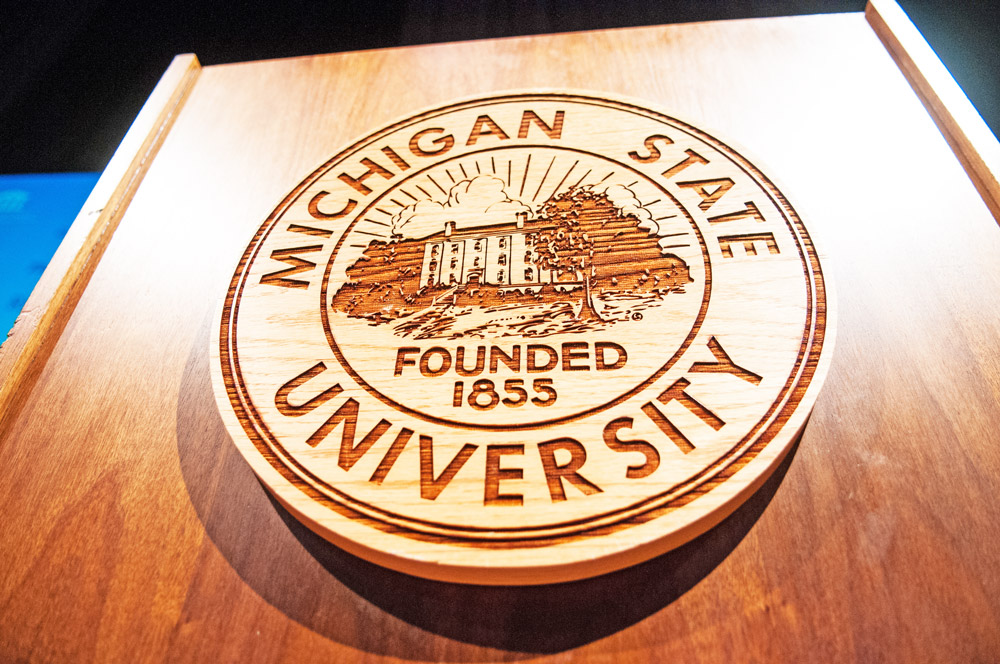As one of the world’s leading research universities, tackling global challenges is at the core of Michigan State University’s identity. Challenges of such magnitude often require collaboration within a worldwide research community.
Researchers on MSU’s campus will now find collaborating with colleagues worldwide easier and more efficient with the newly created MSU Research Network.
Utilizing support from a $500,000 National Science Foundation grant, MSU Information Technology and the Institute for Cyber-Enabled Research (ICER) partnered to put infrastructure in place to provide a high-speed network capable of speeds of 10 to 100 gigabits per second in which to share and transfer data. The MSU Research Network provides speeds that are 10-to-100 times faster than the typical connection on campus.
“Research is becoming increasingly data-driven, and the real benefit of the MSU Research Network is that it allows MSU researchers to share huge datasets that they’ve created with other researchers across the country and the world,” said ICER Director Brian O’Shea. “Researchers can take datasets created elsewhere, bring them to MSU, and use them for research purposes.”
Executive Vice President for Administration and Chief Information Officer Melissa Woo said the cyberinfrastructure supporting the MSU Research Network increases the impact of university researchers’ work.
“The MSU Research Network enhances our faculty’s ability to collaborate locally and globally,” Woo said. “This can help MSU attract and secure future research funding and reaffirms our commitment to high-caliber research.”
The enhanced level of collaboration will aid in researchers’ efforts to solve challenges such as food scarcity and global warming.
Dr. Josh Vermaas has already seen collaboration increase within his lab, focusing on engineering plants or microbes to facilitate efficient energy conversion to meet sustainability challenges.
“The most significant benefit has been in terms of collaborative work within the lab since now the network is no longer the bottleneck when we are sharing multi-GB simulation trajectories from one local workstation to the other,” Vermaas said.
The Vermaas Lab runs molecular dynamics simulations to understand better nanoscale interactions that guide processes and structures within plant materials. The MSU Research Network has allowed the group to focus less on where the data is and more on what they can do with it.
“Previously, 1 Gbps networking would lead to hours-long waits to fetch our simulations from local and national supercomputing resources,” Dr. Vermaas said. “With 10 Gbps connectivity throughout the lab and beyond, those waits have reduced substantially, and we have a better real-time sense of our simulation progress.”
Similarly, Dr. Addie Thompson, whose lab specializes in agricultural genomics and phenomics, has been generating and analyzing large datasets, including terabytes of drone imagery.
“We have a collaborative network across the US, particularly in the Genomes to Fields project in maize,” Thompson said. “There is significant interest in improving predictive abilities for crop growth in different environments, and we share data across the group. Easing the burden of sharing data has been and will be incredibly helpful and essential to facilitate these collaborations.”
Dr. Dan Chitwood’s lab uses X-ray CT and TDA analysis to explore plant morphology, development, and plasticity and to innovate new ways of thinking about, describing, quantifying, and using shape information in the plant sciences and beyond.
“The MSU Research Network has been invaluable in exploring better storage and sharing X-ray Computed Tomography (CT) data,” Chitwood said. “3D, high-resolution X-ray CT images are large datasets that, when collected in bulk using an industrial scanner, create storage and transfer problems. Additionally, we assayed local network architecture by working with the team and our departmental IT expert. As a result, we were made aware of constraints and potential ways to improve network speed that we were unaware of before.”
For more information on the MSU Research Network, including how to connect, visit go.msu.edu/msuresnet.


